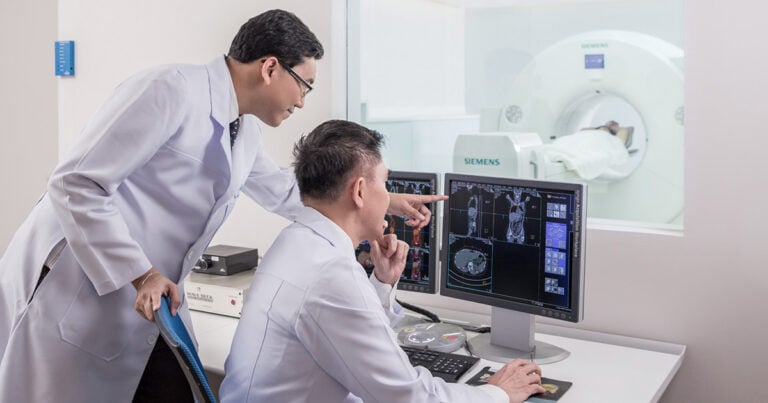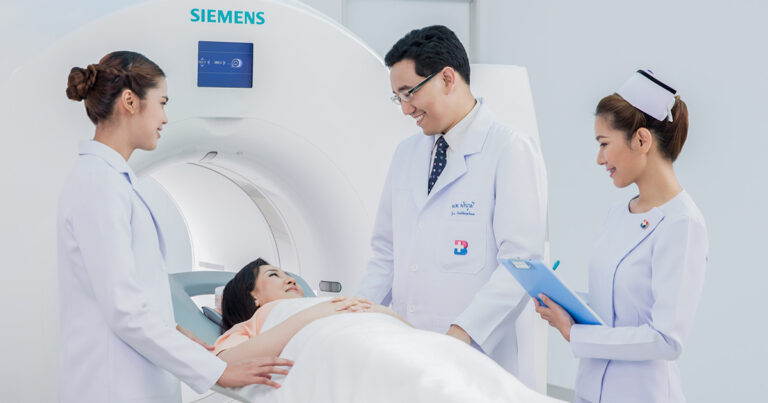PET/CT Scan Flow Motion
Share
What is the PET/CT Scan?
The PET/CT Scan is a cutting-edge nuclear medicine imaging technique which is considered the new standard for diagnosis of cancerous tumors. It is a combination between the PET scan (Positron Emission Tomography) which is able to detect cancerous cell abnormalities at the molecular level with the CT scan (Computed Tomography) which is capable of detecting physiologic abnormalities. When utilized in tandem, this combined technique provides a higher accuracy as it is able to pinpoint the position of the tumor while evaluating cell function, as well as precisely determine the stage of cancer where other methods are incapable. This allows for more efficient and accurate treatment. Furthermore, the PET/CT scan helps doctors by determining how cancer is responding to the treatment. If the current treatment is ineffective, a new approach should be considered. This technique also allows doctors to detect recurrences at an early stage, allowing for prompt treatment before it is able to spread.
The latest technology: PET/CT Scan with flow motion
PET/CT with flow technology is the world’s first PET/CT system to eliminate the demand for stop-and-go imaging since the scanning is based on a single continuous motion of the patient table. Not only less time consuming, PET/CT Flow also provides patients a smooth and convenient scan.
- Finest Detail in Every Organ
- Accurate Quantification in All Dimensions
- Maximum Speed of Scan
- Open Comfort for All Patients
Cancers which can be detected using PET/CT Scan
Presently, the PET/CT scan is capable of detecting almost all types of cancerous tumors. There are only a few cancers which pose limitations, such as prostrate and brain tumors. More than 90% of PET/CT scans use radiopharmaceuticals such as FDOPA and NaF. It is also effective in diagnosis of other abnormalities and diseases such as Alzheimer’s disease, Parkinson’s disease, and epilepsy.

PET/CT Scan Protocol
The patient will receive radiopharmaceuticals in accordance with particular type of disease being tested for. The FDG is a radiopharmaceutical which is a glucose analog considered unlikely to cause pharmacological side effects. An hour after receiving FDG, the scan itself will commence and take approximately 15-20 minutes. The PET/CT scan is regarded as a highly safe procedure since the patient is only required to rest on a bed, in a calm and comfortable environment.
Contraindications of PET/CT Scan
Patients with pregnancy will receive a thorough evaluation for suitability. Furthermore, patients with chronic diseases are not prohibited from this test as it will not aggravate any pre-existing conditions. It is also suitable for diabetics; however they may be required to adjust the dosage of diabetes medication prior to the scan.

Preparation prior to PET/CT scan
Preparation prior to the PET/CT scan depends on the specific type of disease and radiopharmaceutical used. However, general guidelines for most patients are as follows:
- Blood sugar level should not exceed 200 mg/dL in the morning of the scan
- Avoid food or drinks which contain sugar at least 6 hours prior to the scan
- Diabetic patient should consult your doctor regarding medication
The guidelines for PET/CT scan may vary for each patient, as such consultation and advice from relevant medical professionals is recommended.